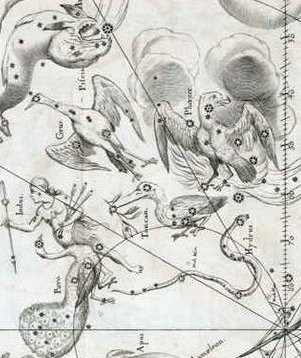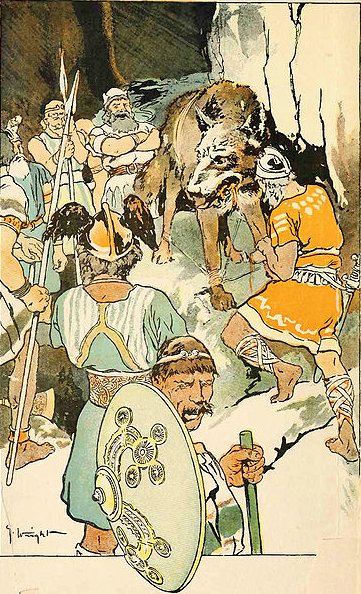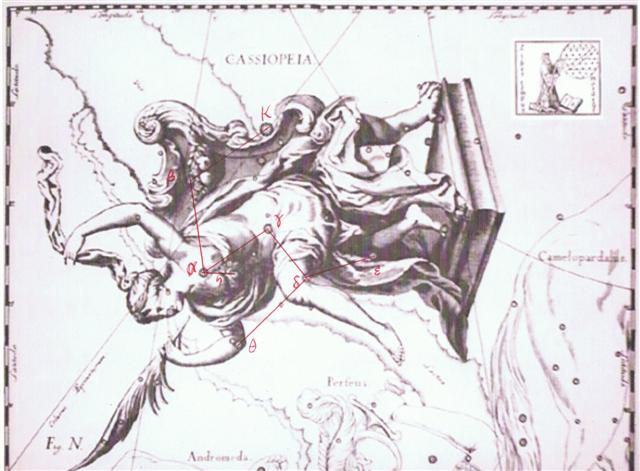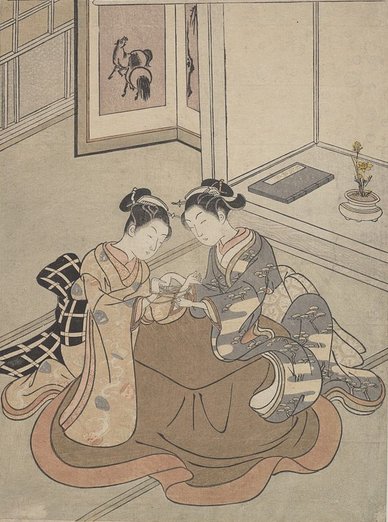11 days before glyph 384 in the C text, viz. at glyph 373, coincided
with September 27 (270 = 9 * 30 = 5 * 54) = October 8 (8-8) -
11.
... 1 (Quenching of the fires) + 5 (Lighting of
the Flame) + 5 (Festival) = 11 and there were also 11 days from
the December solstice (day 355) to the beginning of January (the
Janus month) ...
|
*JULY 29
(210) |
30 (*314
- 183) |
31 |
*AUGUST
1 |
2 |
3 (*135) |
|
October
5 |
6 |
7 (280) |
8 (*201) |
9 |
10 (*135
+ *68) |
 |
 |
 |
 |
 |
 |
|
*Ca14-18 |
*Ca14-19 |
*Ca14-20 |
*Ca14-21
(384) |
*Ca14-22 |
*Ca14-23 |
| te
honu paka |
te
henua |
honu kau |
te mata |
te honu |
kua heheu |
|
1h (15.2)
β Phoenicis
(15.1), υ Phoenicis, ι Tucanae (15.6), η Ceti, ζ
Phoenicis (15.7) |
Al Batn Al Hūt-26 /
Revati-28 / 1-iku
MIRACH (Girdle)
= β Andromedae,
KEUN MAN
MUN (Camp's South Gate)
= φ Andromedae (16.0),
ANUNITUM
= τ Piscium (16.5),
REVATI (Abundant)
= ζ Piscium (16.9)
|
ν Phoenicis (17.4), κ
Tucanae (17.6) |
no star listed (18) |
ADHIL
(Garment's Trail)
= ξ Andromedae (19.3), θ
Ceti (19.7) |
KSORA
(Knee) = δ
Cassiopeiae (20.1), ω Andromedae (20.6), γ Phoenicis
(20.8) |
|
*JANUARY
27 |
28
(*314) |
29 |
30 |
31 |
(100 -
68 = 32) |
|
April 5 |
6 |
7 (280 -
182) |
8 |
(99 +
365 = 464) |
10 (100) |
270 (September 27) - 373 + 366 = day 263, i.e. September 20,
when
in the night 0h was close to the Full Moon. And this was 7 + 11 = 18
days before day 384, but the deluge could have stretched for
more than a day, not ending until with September 27:
|
*JULY 12 |
13 |
14 (*115) |
15 |
16 |
17 (*186 -
*68) |
|
'August 22 |
23 (235 =
262 - 27) |
24 (8 * 29½) |
25 (*157) |
26 |
27 |
|
°September
14 |
15 |
16 |
17 (260) |
18 (9 * 29) |
19 (*182) |
|
September 18 (9 * 29) |
19 |
20 (*183) |
21 (264) |
Equinox |
23 |
|
π Virginis
(181.0), θ Crucis (181.5) |
12h (182.6)
ο
Virginis (182.1), η Crucis (182.5) |
ALCHITA = α
Corvi,
MA
WEI (Tail of the Horse)
= δ Centauri (183.1),
MINKAR
(Nose) = ε Corvi
(183.7), ρ Centauri (183.9) |
PĮLIDA
(Pale)
= δ Crucis (184.6),
MEGREZ (Root
of the Tail)
= δ Ursae Majoris (184.9) |
Hasta-13
(Hand) /
Chariot-28 (Worm)
GIENAH
(Wing)
= γ Corvi
(185.1), ε Muscae (185.2), ζ Crucis (185.4),
ZANIAH
(Corner) = η Virginis (185.9) |
CHANG SHA
(Long Sand-bank)
= ζ Corvi (186.3) |
 |
 |
 |
 |
 |
 |
|
*Ca14-1 (4 +
360) |
*Ca14-2 |
*Ca14-3 (366) |
*Ca14-4 |
*Ca14-5
(368) |
*Ca14-6 |
|
Kua tupu te ata i te henua |
kua
ruku te manu |
|
η Tucanae (363.0), ψ Pegasi
(363.1), 32 Piscium (363.2), π Phoenicis (363.4), ε
Tucanae (363.6), τ Phoenicis (363.9) |
θ Oct. (364.4) |
Al
Fargh al Thāni (Rear Spout) -25 0h (365.25)
CAPH
(Hand) = β
Cassiopeiae,
SIRRAH (Navel of the Horse) = α Andromedae
(0.5), ε Phoenicis, γ³ Oct. (0.8) |
Uttara Bhādrapadā-27
/ Wall-14
(Porcupine)
ο Oct. (1.3),
ALGENIB
PEGASI (The Side of Pegasus)
= γ Pegasi (1.8) |
χ Pegasi (2.1), θ Andromedae
(2.7) |
σ Andromedae (3.0), ι Ceti
(3.3), ζ Tucanae (3.5), ρ Andromedae, π Tucanae (3.7) |
|
*JANUARY 11 |
12 |
13 (378 =
366 + 12) |
14 |
15 |
16 |
|
'February 20 |
21 |
22 (53) |
Terminalia |
24 (*341 =
*368 - *27) |
25 |
|
°March 15
(*360) |
16 |
17 |
18 |
19 |
20 (79) |
|
March 19
(78) |
20 |
21 (0h) |
22 (81 +
366) |
23 (*368) |
24 (449 = 83
+ 366) |
|
Egyptian hand |
 |
Phoenician
kaph |
 |
Greek
kappa |
Κ (κ) |
|
Kaph is
thought to have been derived from a pictogram of
a hand (in both modern Arabic and modern Hebrew,
kaph means palm/grip) ...
...
The manik, with the tzab, or
serpent's rattles as prefix, runs across Madrid
tz. 22 , the figures in the pictures all holding
the rattle; it runs across the hunting scenes of
Madrid tz. 61, 62, and finally appears in all
four clauses of tz. 175, the so-called 'baptism'
tzolkin. It seems impossible, with all this, to
avoid assigning the value of grasping or
receiving. But in the final confirmation, we
have the direct evidence of the signs for East
and West. For the East we have the glyph
Ahau-Kin, the Lord Sun, the Lord of Day; for
the West we have Manik-Kin, exactly
corresponding to the term Chikin, the
biting or eating of the Sun, seizing it in the
mouth.



The pictures
(from Gates) show east, north, west, and south;
respectively (the lower two glyphs) 'Lord' (Ahau)
and 'grasp' (Manik).
Manik was the 7th day sign of the 20 and
Ahau the last ... |
Caph (Hand, β Cassiopeiae) was at the Rear Spout
and this surely was a place where the Sun would be drenched.
Here Caph and Sirrah rose at the same time together with the Sun.

Metoro's words kua ruku te manu could have
been provoked by the whole set of 6 glyphs above, where only the
top part of the images were visible (the rest looking as if
submerged).
|
Ruku
(Also rukuruku): To dive; to fish
underwater; diving; i-turu-era au ki tai, he-ūi koai
te tagata era, e-ruku-mai-era i te īka, i te ura, as
I went down to the sea, I saw who those people were, who
were fishing underwater for fish and lobsters. Vanaga.
To bathe, to immerse, to swim face
down, to dive, to leap into the water from a height.
Hakaruku, to cover with water, to immerse, to
submerge, to moisten, to wash, to drink. P Mgv.: ruku,
to dive, to plunge. Mq.: śku, to dive, to
immerse. Churchill. |
...
Maui, in the custom
of ancient times, had several different names. At the beginning
he was Maui potiki because he was the youngest child.
Then he had
his given name, Maui tikitiki a Taranga, and later he
acquired other names for different sides of his character.
According to
what he was up to he might be known as Maui nukarau, or
Maui-the-trickster; Maui atamai, Maui-the-quick-witted;
Maui mohio, Maui-the-knowing; Maui toa,
Maui-the-brave; and so on.
He was an
expert at the game of teka, or dart-throwing, and all the
best patterns in the string game of whai, or cat's
cradles, were invented by Maui.
He was also a great
kite-flier, and the story is told of a small boy of another name
(but it could only have been Maui) who once came half out of the
water and snatched the kite-string of a child on the land. He
then slipped back into the sea and continued flying it from
under the water until his mother was fetched, for she was the
only one who could control him and make him behave at that time
...
... In the deep night
before the image [of Lono] is first seen, there is a
Makahiki ceremony called 'splashing-water' (hi'uwai). Kepelino
tells of sacred chiefs being carried to the water where the
people in their finery are bathing; in the excitement created by
the beauty of their attire, 'one person was attracted to
another, and the result', says this convert to Catholicism, 'was
by no means good'.
At dawn, when the
people emerged from their amorous sport, there standing on the
beach was the image of Lono. White tapa cloth and
skins of the ka'upu bird hang from the horizontal bar of
the tall crosspiece image. The ka'upu is almost certainly
the albatross, a migratory bird that appears in the western
Hawaiian chain - the white Lanyon albatross at Ni'ihau
Island - to breed and lay eggs in October-November, or the
beginning of the Makahiki season ...

| *JULY 18 |
19 (200) |
20 (*121) |
21 |
22 / 7 |
|
September 24 (*187) |
25 (268) |
26 |
27 |
28 |
|
INTROMETIDA
= ε Crucis (187.4),
ACRUX = α Crucis
(187.5) |
γ Com. Berenicis (188.0), σ
Centauri (188.1),
ALGORAB = δ Corvi
(188.5), GACRUX
= γ Crucis (188.7) |
γ Muscae (189.0),
AVIS SATYRA
= η Corvi (189.3),
ASTERION (Starry) = β
Canum Ven. (189.5),
KRAZ = β Corvi, κ
Draconis (189.7) |
α Muscae (190.2), τ Centauri
(190.5), χ Virginis (190.7)
ALDERAMIN (α Cephei)
|
Al Įwwā'-11 /
Shur-mahrū-shirū-18 (Front
or West Shur?)
Sombrero Galaxy = M104
Virginis (191.1), ρ Virginis (191.4),
PORRIMA = γ Virginis,
γ Centauri (191.5) |
 |
 |
 |
 |
 |
|
*Ca14-7 |
*Ca14-8 |
(372 = 12 * 31) |
(373 = 384 - 11) |
*Ca14-11 |
| te kihikihi - te hoea |
te kihikihi - o te vai
- te kihikihi |
te vero |
te henua |
te heke |
|
no star listed (4) |
ANKAA = α Phoenicis,
κ Phoenicis (5.0)
ALPHARD (α Hydrae)
|
λ Phoenicis (6.3), β Tucanae (6.4) |
Andromeda Galaxy (M31), π Andromedae (7.7) |
ε
Andromedae (8.2), DELTA = δ
Andromedae (8.4),
SCHEDIR (Breast) = α
Cassiopeiae (8.6), ζ Andromedae, μ
Phoenicis (8.9) |
|
*JANUARY 17 |
18 |
(384 = 354 + 30) |
20 |
21 |
|
"February 12 (*329) |
13 |
All
Hearts' Day |
15 |
16 (413 = 14 * 29½) |
|
'February 26 |
27 |
28 (*345 = *372 - 27) |
'March 1 (60) |
2 |
|
°March 21 |
22 |
23 (*368) |
24 |
Julian
equinox (84) |
| Julian
equinox |
March 26 |
27 (*372) |
28 |
29 (454 = 88 + 366) |
September 20 (263) - when all the fires were
'quenched' - would then be followed by 5 days of lighting the
new Flame, and September 25 (263 + 5 = 268) would have had
α Phoenicis (Ankaa) close to the
Full Moon. From the Phoenix bird, in his ashes (te kihikihi),
a new fire could be generated.
| Kihi
Kihikihi, lichen; also: grey,
greenish grey, ashen. Vanaga. Kihikihi, lichen T,
stone T. Churchill.
The
Hawaiian day was divided in three general parts, like
that of the early Greeks and Latins, - morning, noon,
and afternoon - Kakahi-aka, breaking the shadows,
scil. of night; Awakea, for Ao-akea,
the plain full day; and Auina-la, the decline of
the day.
The lapse of
the night, however, was noted by five stations, if I may
say so, and four intervals of time, viz.: (1.) Kihi,
at 6 P.M., or about sunset; (2.) Pili, between
sunset and midnight; (3) Kau, indicating
midnight; (4.) Pilipuka, between midnight and
surise, or about 3 A.M.; (5.) Kihipuka,
corresponding to sunrise, or about 6 A.M. ...
(Fornander) |

| |
|
Delta |
δ Andromedae |
8.4 |
March 29 (88) |
- |
- |
| |
|
|
η Phoenicis |
9.4 |
March 30 (89) |
- |
- |
|
0 |
- |
Zero |
η
Andromedae |
11.4 |
April 1
(91) |
- |
0 |
| |
|
Whip |
Cih (γ
Cassiopeiai) |
12.4 |
April 2
(92) |
- |
1 |
|
1 |
Al
Sharatain |
Pair of
Signs |
β
Arietis (Sheratan),
γ (Mesarthim) |
27.4 |
April 17
(107) |
16 |
16 |
| |
|
Musca
Borealis |
35
(Head of the Fly), 39 (Kaffaljidhma), and
41
Arietis (Bharani) |
41.4 |
May 1
(121) |
14 |
30 |
|
2 |
Al
Dabarān |
Follower |
α Tauri
(Aldebaran), θ¹, 貓,
γ
(Hyadum I),
δ (Hyadum II), ε (Ain) |
63.4 |
May 23
(143) |
22 |
52 |
|
11 * 11 = 121
(May 1) = 384 - 263 (September 20) |
|
*JULY 23 (204) |
24 |
25 |
26
(*127) |
27 |
28 |
|
September 29 |
30
(*193) |
October 1 |
2 |
3 |
4 (277) |
|
ι
Crucis (192.2), β Muscae (192.5),
MIMOSA
= β Crucis (192.9) |
no
star listed (193) |
κ
Crucis (194.4), ψ Virginis (194.5), μ Crucis, λ
Crucis (194.6),
ALIOTH (Fat Tail)
= ε
Ursae Majoris, ι Oct. (194.8) |
MINELAUVA
= δ Virginis (195.1),
COR
CAROLI = α Canum Ven.
(195.3) |
δ
Muscae (196.5),
VINDEMIATRIX (Grape Gatherer)
= ε
Virginis (196.8) |
13h
(197.8)
ξ¹
Centauri (197.1), ξ² Centauri (197.9) |
 |
 |
 |
 |
 |
 |
|
*Ca14-12 |
*Ca14-13 |
*Ca14-14 |
*Ca14-15 (378) |
*Ca14-16 |
*Ca14-17 |
|
te kihikihi |
o te henua - kua haga hia |
kua pua |
te vero |
te henua |
kiore - te henua |
|
ξ Phoenicis (9.0), ρ
Tucanae (9.1),
DENEB KAITOS
= β Ceti,
η
Phoenicis (9.4),
AL
NITHĀM (String of Pearls)
= φ¹ Ceti (9.6) |
ACHIRD (Woman with Luminous Rays)
= η Cassiopeiae
(10.7) |
Legs-15 (Wolf)
ν Andromedae
(11.0), φ² Ceti (11.1), ρ Phoenicis (11.2),
η ANDROMEDAE (11.4) |
CIH
(Whip) = γ
Cassiopeiae, λ Tucanae (12.4), φ³ Ceti (12.6), μ
Andromedae (12.8) |
φ4 Ceti (13.2) |
no star listed (14) |
|
*JANUARY 22 |
(388
= 392 - 4) |
24 |
25 (210 + 180) |
26 |
27 (392) |
|
March 30 |
31
(*10) |
April 1 |
2
(92 = *378 - 366 + 80) |
3 |
4 |

Cassiopeia would have been easy to
find by everyone, given they did not try to look
from a position too far down in the south.

And when her left breast (α
Schedir) rose heliacally it was a sign of Sun having
been reborn.

Delta in Andromeda was 3 days before η,
when the Sun 'began to walk' - at the 15th Chinese
station Legs (alluding to the Opener of the Way,
the Wolf).
... They go
inland at the land. The child nursed and tended grows
up, is able to go and play. Each day he now goes off a
bit further away, moving some distance away from the
house, and then returns to their house. So it goes on
and the child is fully grown and goes to play far away
from the place where they live ...

The Sun (Horse)
began to walk (on Land) in April 1, when the Full Moon had
reached October 1, because this was 364 / 4 = 91 days from the
beginning of the year.
|
Egyptian courtyard |
 |
Phoenician heth |
 |
Greek eta |
Η (η) |
|
... The letter
shape ultimately goes back to a hieroglyph for
'courtyard' ... possibly named
hasir in the Middle Bronze Age alphabets,
while the name goes rather back to
hayt, the name reconstructed for a letter
derived from a hieroglyph for 'thread'
 |
... string
games could be resumed after it was clear that the Sun
had managed to leave the horizon and was rapidly gaining
in altitude: 'Before the sun starts to leave the horizon
... when it shows only on the horizon, ... then string
games were no longer allowed as they might lacerate the
sun. Once the sun had started to go higher and could be
seen in its entirety, string games could be resumed, if
one so wished. So the restriction on playing string
games was only applicable during the period between the
sun's return and its rising fully above the horizon
...

|















